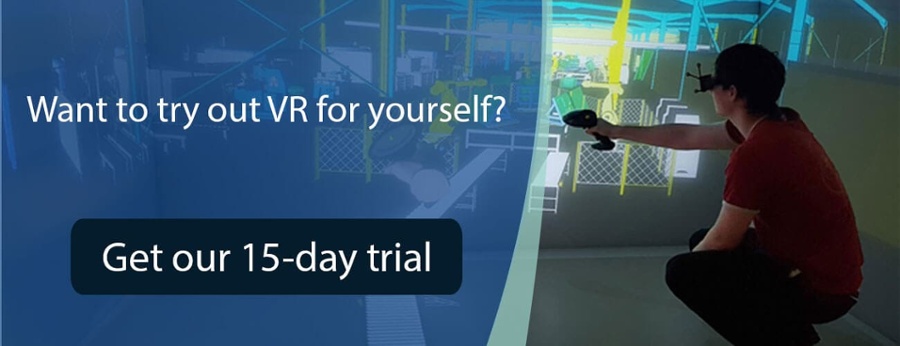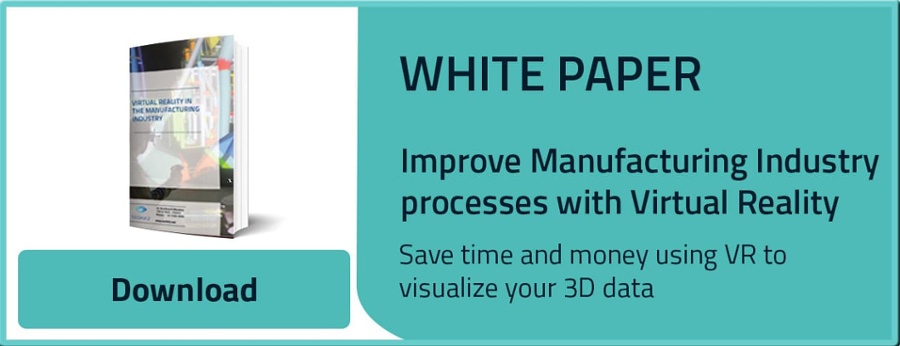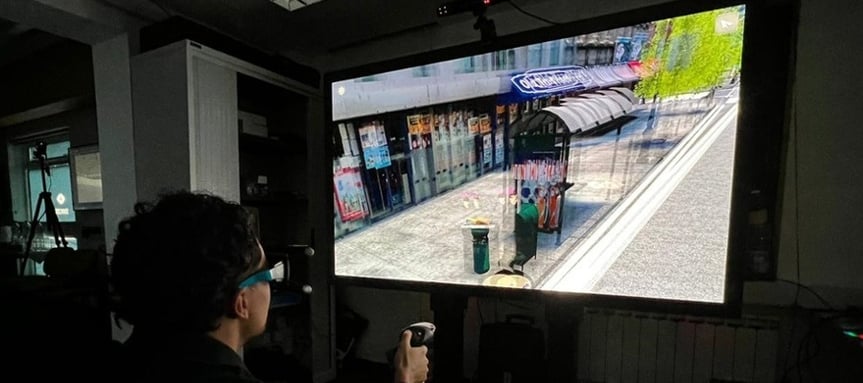
With higher levels of brightness, contrast, and color accuracy than other display technologies, VR LED walls are the superhero of immersive virtual reality experiences. With their high-resolution displays and flexibility in size and shape, they provide a more realistic and engaging environment than other display solutions like VR headsets. From design and prototyping to manufacturing and assembly, LED walls are the perfect tool for bringing your virtual and augmented-reality vision to life.
What is an XR LED wall?
XR LED walls, are large high-resolution displays made up of multiple LED tiles that are seamlessly joined together to form a single, continuous screen. These LED walls are used to create fully immersive virtual reality environments, allowing users to experience interactive 3D content with a greater sense of immersion.
LED walls are not new technology, but a popular choice for creating virtual reality experiences, as they offer several advantages over other display technologies such as head-mounted displays (HMD). For example, they provide a much higher level of brightness, contrast, and color accuracy, which is essential for creating realistic and engaging virtual worlds.
VR LED walls: Key Considerations for a great immersive experience
Like any augmented and virtual reality display option, an LED wall needs to be the right fit for your business. It is an interesting alternative to projection-based VR displays like VR CAVE and powerwalls.
The choice of the right display for your immersive room will mostly depend on:
- The size of your VR room (and how far the users will be from the screen)
- Your budget and timeline
- The type of three-dimensional content you will render
LED display or LED wall for your VR experiences?
A LED display refers to a single screen, however big, like the one you can have in a conference room. A LED wall is a large-scale setup consisting of several LED displays working together – but with the possibility to divide the content in several sections.
You are not restricted to portrait or landscape orientation with LED walls. You can mix and match orientations or sizes to create a mosaic of displays, or use curved displays
Pixel pitch and size: What is the optimal viewing distance for your VR LED wall?
In a LED wall, each LED is a pixel of your content. The pixel pitch of a LED wall indicates the distance between the LEDs, which affects the distance a user should be to see the VR content as intended. A lower pixel pitch means that the LEDs are close from one another, and that the viewing distance will be short as well.
As a rule of thumb, the viewing distance is about 2-3 times the pixel pitch number in meters for standard use. For example, for a pixel pitch of 2, the viewer should stand 4 meters away from the screen to get a good picture. For VR use cases, we generally recommend a narrow pixel pitch (.9 millimeter) for a great virtual experience, as users need to be close to the screen for good immersivity.
What resolution is best for your VR LED wall?
Often, when choosing a display technology, you hear statistics about resolution — for example “1080p” or “4k” displays. But the most important criteria here will be the size of your 3D model and the number of triangles. A high-quality content is always recommended for high resolution results
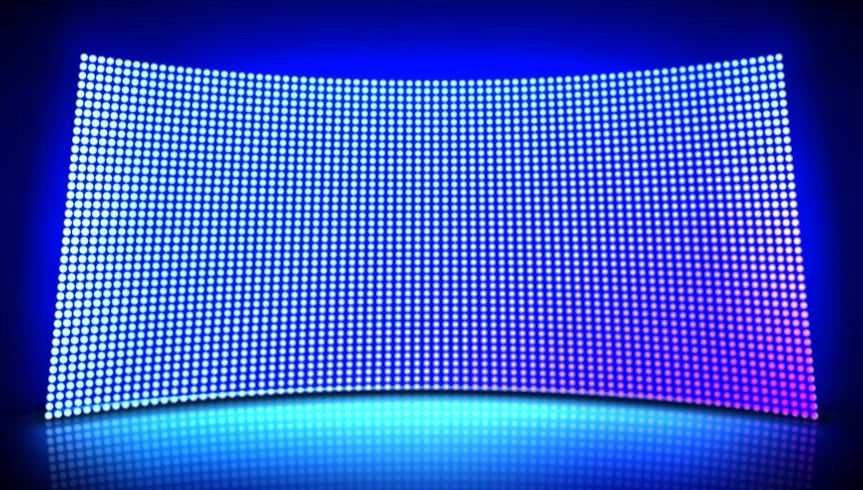
What size should your VR LED wall be?
LED walls are constructed of LED panels that come in many different sizes and shapes. Most often the standard panel size is 500x500 mm. The screen aspect ratio is usually dictated by the size of your 3D models, and the physical limitations of your VR room.
What is the best aspect ratio for a VR LED wall?
Aspect ratio describes the relationship of width and height of a digital display. 1:1 ratio means that the width and height are equal – and that is the scale at which you want to visualize your CAD models in VR.
Other factors to consider
Product quality
There are dozens of LEDs on the market, from the cheap Chinese one to the top quality. Ensure you procure from an established supplier that can offer aftersales service in case some tiles are defective.
Power requirements
Check with your VR solution provider for exact power draw of your LED wall. Even though, LED walls are usually used at a fraction of their light potential for VR, LED walls have huge nominal power requirements, that might not be supported by your standard power outlet.
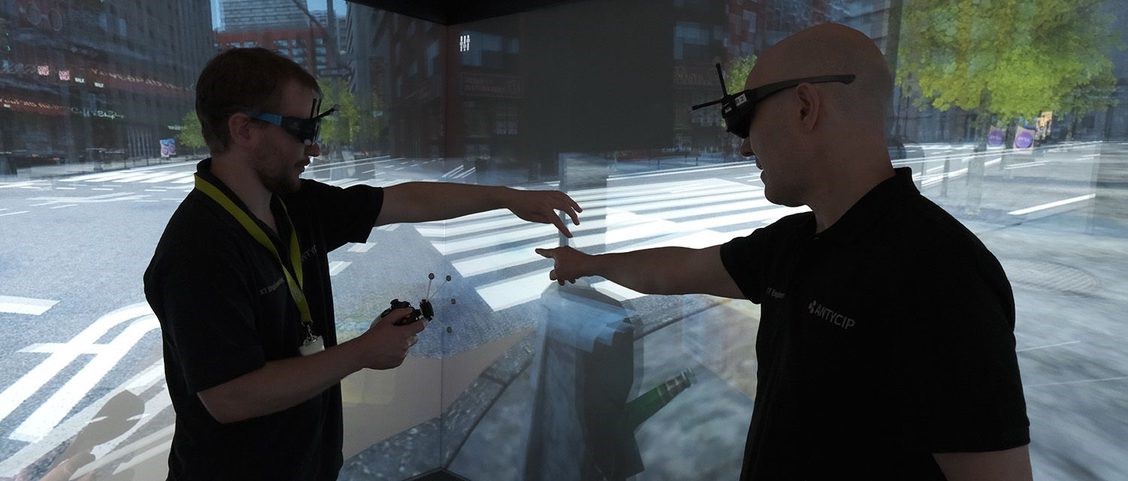
Controllers
Even though all LED walls are supposed to be compatible with VR, this ability is reliant on the electronic controller driving the wall. It must be able to handle at least 120 Hz (to distribute 60 Hz per eye). In a near future, you might be able to find controllers working 240 Hz or 360 Hz, which will make it possible to multiple tracked users in the simulation.
Why LED walls are a game-changer for AR/VR professionals
Enhanced immersion and realism
An LED wall can display high-resolution, high-brightness, and high-contrast visuals with a wide field-of view – unlike a VR headset. They facilitate data visualization, remote training, and simulation-based learning, providing a powerful tool for teamwork and knowledge-sharing.
Improved AR/VR collaboration and communication
LED walls offer a shared experience for multiple users and a better sense-of-presence than headsets. It enables coworkers to share a common 3D virtual environment and interact with each other in real-time. LED walls eliminate the need for individual head-mounted devices, and foster face-to-face collaboration between collaborators.
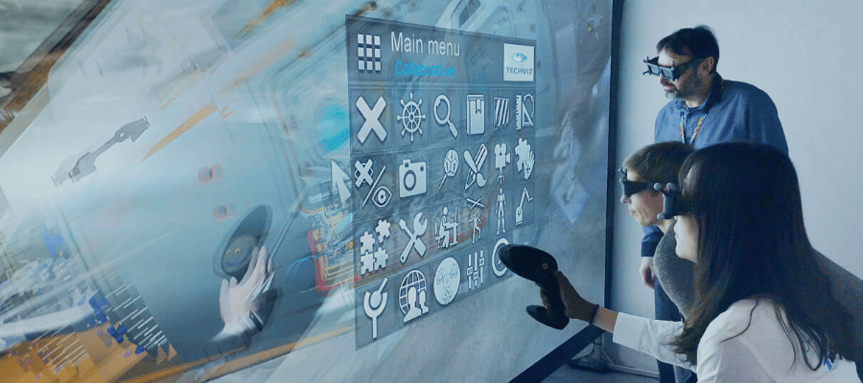
Increased productivity and efficiency
LED walls provide a comfortable and completely immersive environment (without a tethered headset nor a bulky virtual reality gear), and fosters quick and accurate decision-making. They perfectly integrate with existing workflow, and are ideal if you need to combine XR with tracking and other sensory devices.
Reduced costs and improved ROI
LED walls reduce the need for expensive physical sets and prototypes. The panels are brighter and more direct than a projection display – and do not suffer from a decrease in brightness in the first year of use like some projectors do. Although they tend to cost more upfront than projectors for a similar quality, maintenance cost are lower for LED walls
From prototyping to training: discover the versatility of LED walls for Virtual reality
Design and prototyping
With LED walls, designers and engineers can quickly iterate on their prototype in real-time at 1:1 scale and immediately visualize and assess their changes. This allows for faster and more efficient prototyping, as well as more accurate and realistic visualization of the end product.
Manufacturing and assembly process
LED walls allow you to create realistic simulations of your production process. These simulations can either be used to identify potential bottlenecks, optimize existing methods, or train collaborators in a virtual replica of their factory floor.
Additionally, VR LED walls can be used to simulate different production scenarios, allowing manufacturers to test different processes and equipment configurations before making a significant investment.
Virtual reality simulation and training
With LED walls, you can easily display realistic environments – like your own buildings, and practice real-life scenarios in a safe and controlled environment. This way trainees can gain experience and confidence before they are required to perform tasks in the real world.
Additionally, the use of VR LED walls can provide a more engaging and memorable training experience, improving knowledge retention and ultimately leading to better performance in the field
VR LED walls can enhance the immersion and help in creating more realistic and interactive virtual environments. By incorporating LED walls into your XR workflows, you can create engaging virtual experiences for your collaboration sessions; simulation and training. This type of display is ideal for any use cases and will easily fit your need for high-quality, immersive VR technology.






 Back to Blog
Back to Blog
